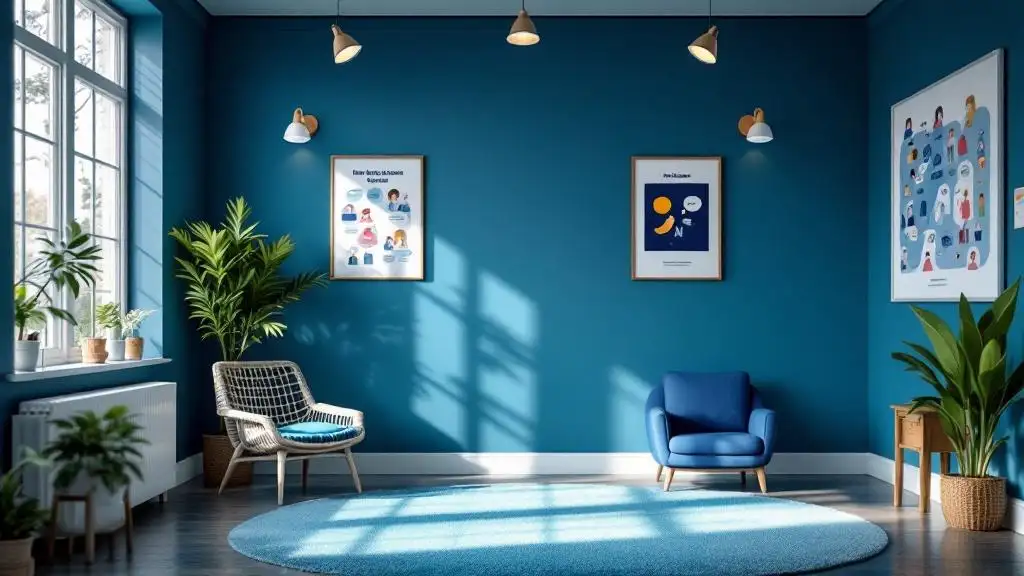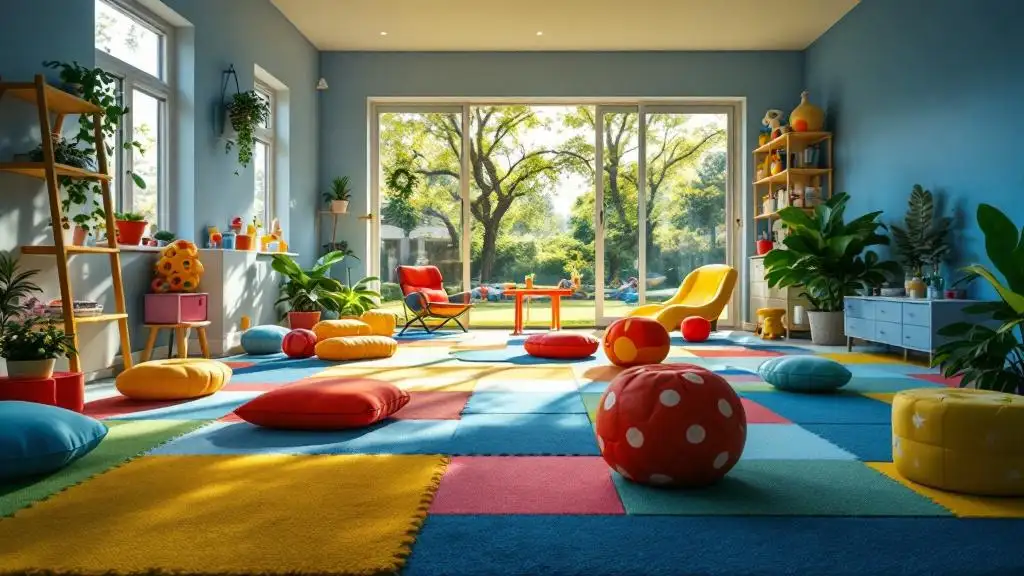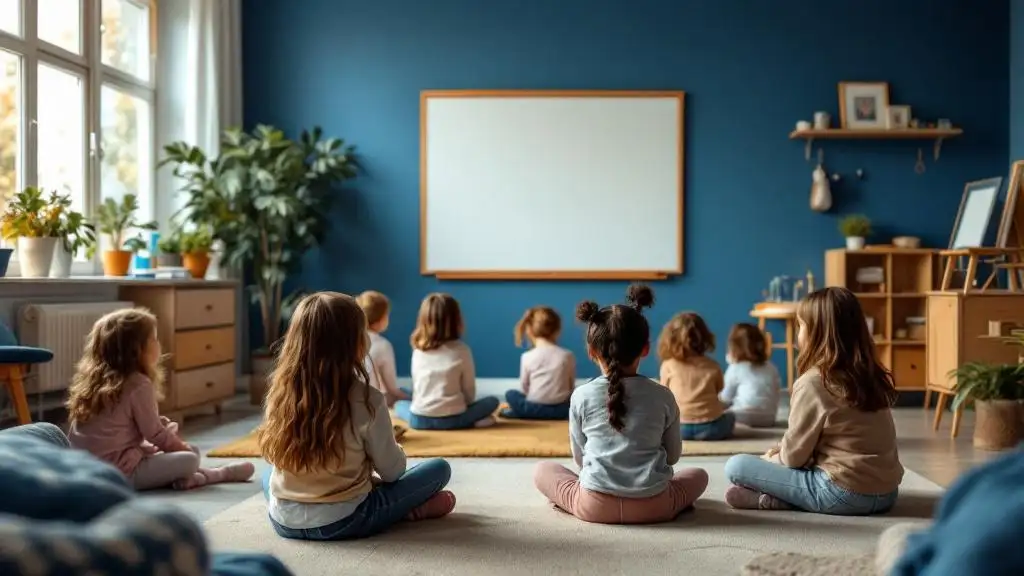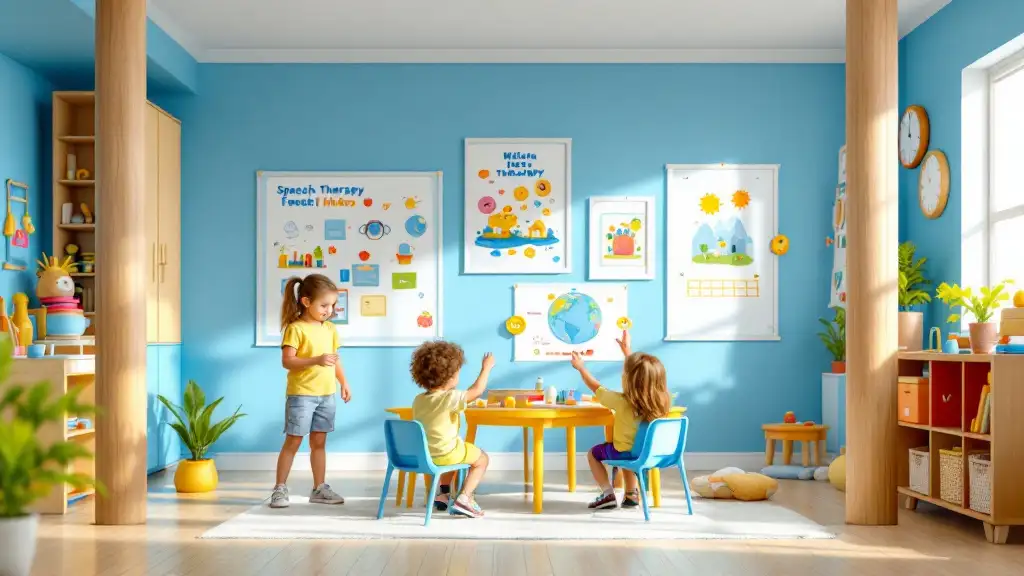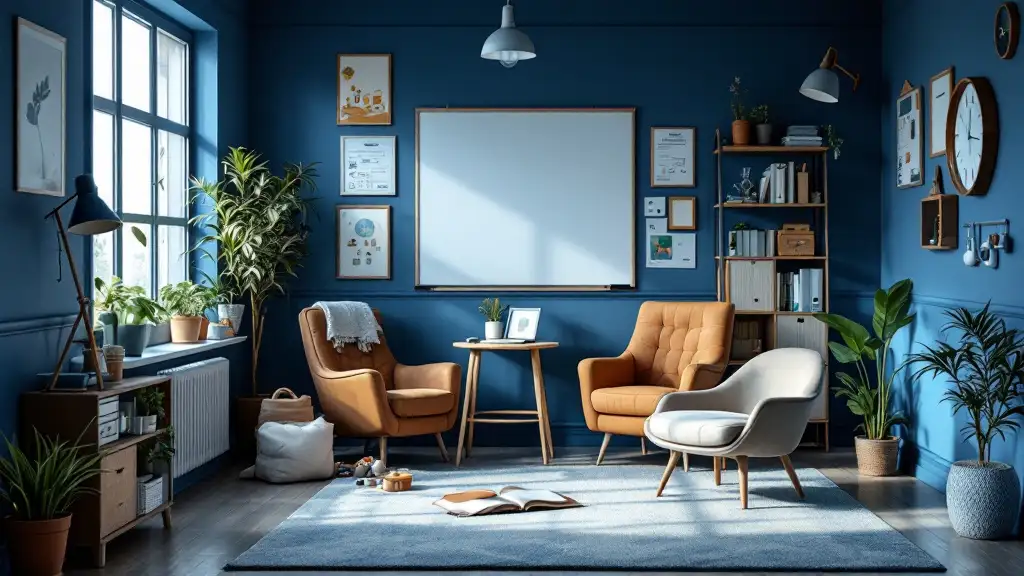
Understanding the Importance of Personal Hygiene Routines
Developing effective personal hygiene routines is essential for promoting health, independence, and well-being among adults with disabilities. Tailoring these routines to meet individual needs involves assessing abilities, utilizing adaptive tools, and creating structured, consistent practices. This article explores best practices, supportive strategies, and available resources to help caregivers and individuals foster autonomy and maintain dignity through effective hygiene routines.
Establishing Structured and Personalized Hygiene routines

How can routines be tailored to the abilities and preferences of adults with disabilities?
Creating personalized hygiene routines begins with understanding each individual's unique skills, sensory sensitivities, and preferences. An effective approach involves developing routines that are flexible yet structured enough to foster independence. For example, some individuals might benefit from breaking down tasks such as brushing their teeth or washing their face into smaller, manageable steps, making them less overwhelming.
Incorporating their preferences, like choosing preferred scents or types of cleaning products, can motivate engagement and improve comfort. Using visual tools such as checklists, picture schedules, and social narratives provides clear cues that support understanding and memory. These visual aids can also serve as prompts to initiate and complete each task, helping individuals feel more in control.
How does using visual aids like checklists, picture schedules, and social narratives help?
Visual supports are invaluable in teaching hygiene routines. Checklists and picture schedules visually break down complex activities into simple steps, enabling individuals to follow routines independently. For example, a picture schedule for showering might include images of turning on the water, applying soap, rinsing, and drying.
Social narratives, which are stories that describe the what, why, and how of hygiene tasks, foster understanding and motivation. They clarify the importance of cleanliness for health and social acceptance. When used consistently, visual prompts serve as reminders that reinforce learned behaviors, reducing confusion and enhancing confidence.
Why is breaking down tasks into manageable steps important?
Breaking routines into smaller, achievable steps prevents feelings of overwhelm and frustration, especially for individuals with cognitive or sensory challenges. Smaller steps make it easier to master each part without fatigue. For example, instead of telling someone to 'bathe,' the routine can be broken into steps: turn on shower, get in, wash hair, wash face, wash body, rinse, and dry off. This stepwise approach allows the individual to concentrate on one task at a time, leading to greater success and independence.
How can consistency and routines help build habits?
Consistency reinforces learning. Performing hygiene activities at regular times, such as after waking and before bed, makes them habitual. Predictable routines reduce anxiety and help establish a sense of security. Using visual aids alongside consistent cues—like alarm sounds or specific locations—creates a stable environment for practicing routines. Over time, the individual internalizes these habits, leading to greater independence.
How should routines be adjusted as needs change?
As individuals grow or their health status changes, routines should be reviewed and adapted. For example, someone with developing strength might initially need support but can progress to independent tasks. Adjustments can include adding or removing steps, changing the type of assistive devices used, or modifying the environment for better accessibility. Regular assessment and open communication with the individual and caregivers ensure routines remain relevant, manageable, and effective.
| Aspect | Strategies | Supporting Details |
|---|---|---|
| Individualization | Tailor routines to abilities | Consider sensory sensitivities, preferences, and strengths. |
| Visual Aids | Use checklists, schedules, and social stories | Promote independence and understanding. |
| Task Breakdown | Divide activities into steps | Reduce overwhelm and build confidence. |
| Routine Consistency | Keep routines regular | Reinforce habits and reduce anxiety. |
| Adaptation | Modify routines as needs evolve | Respond to developmental changes and health status. |
This personalized, structured approach ensures adults with disabilities can develop sustainable hygiene practices that promote health, dignity, and independence. Through thoughtful planning, visual supports, and flexibility, caregivers can help these individuals succeed in daily self-care activities, ultimately supporting their overall well-being.
Supporting Independence Through Adaptive Tools and Assistive Devices

How can caregivers support adults with disabilities in promoting independence in personal care?
Caregivers play a vital role in helping adults with disabilities develop and maintain personal hygiene routines that foster independence. A fundamental approach involves creating personalized routines that incorporate visual aids such as picture schedules and checklists. These tools help individuals understand each step of hygiene tasks, making the process clearer and less overwhelming.
Using adaptive products and assistive devices is essential to increase accessibility and safety. For example, adaptive bathroom products like shower chairs, grab bars, and bidets significantly reduce physical barriers, allowing individuals to perform tasks like bathing and toileting more independently. Assistive devices such as long-handled brushes, grip aids, and specialized bottles or dispensers can enhance grip, reach, and control, making routine activities easier and safer.
Encouraging self-determination by involving adults in selecting their hygiene products and setting personalized goals enhances motivation and confidence. Breaking down complex tasks into manageable steps, providing consistent prompts, and utilizing positive reinforcement can gradually build skills and foster independence.
Safety and cleanliness of assistive devices are also crucial. Regular cleaning and maintenance prevent bacteria buildup and ensure functionality. Tasks such as disinfecting grab bars, washing shower chairs, and checking the condition of adaptive tools help preserve their effectiveness and safety.
By combining these strategies—personalized routines, adaptive products, caregiver support, and proper maintenance—adults with disabilities can achieve greater autonomy in personal hygiene. This holistic approach supports their dignity, promotes self-esteem, and improves overall well-being.
| Assistive Device | Purpose | Additional Features |
|---|---|---|
| Shower chairs | Safe seating during bathing | Adjustable height, non-slip legs |
| Grab bars | Stability and support | Mounted horizontally or vertically |
| Bidets | Assist with hygiene after toileting | Manual or electronic models, adjustable water pressure |
| Long-handled brushes | Ease of reach for brushing teeth and hair | Ergonomic handles, replaceable heads |
| Grip aids | Improve grip on objects | Rubberized or textured surface |
| Specialized bottles | Easier dispensing of hygiene products | Smaller, lightweight, leak-proof |
In summary, the integration of adaptive bathroom products and assistive devices, along with consistent caregiver support and individualized planning, form the backbone of facilitating independence. This approach not only enhances safety but also boosts confidence and promotes a more self-reliant lifestyle.
For more information, searching “assistive devices for independence in personal care” provides extensive resources and product options tailored to various needs and disabilities.
Effective Strategies and Techniques for Hygiene Routines

What are effective strategies and techniques for implementing hygiene routines for adults with disabilities?
Teaching personal hygiene to adults with disabilities involves a combination of tailored approaches and supportive tools. One of the most effective strategies is to customize routines based on each individual's unique abilities and needs. This individualized approach ensures that the routines are manageable and relevant, encouraging independence and motivation.
Visual cues and prompts are invaluable in assisting learning and recall. Using picture schedules, checklists, and visual supports helps individuals understand each step of their hygiene routines and stay on track. These tools also serve as reminders, making routines less intimidating and more structured.
Adaptive products further facilitate hygiene activities by reducing physical effort and increasing accessibility. Items such as long-handled brushes, grips, shower chairs, and specialized bottles adapt to various physical limitations, allowing tasks like brushing teeth, washing face, or showering to be performed with less strain.
Establishing consistent routines is crucial. Regular schedules foster habit formation, improve compliance, and reduce anxiety. Consistency also creates a sense of security, especially during transitions or stressful periods.
Energy conservation is another important aspect. Techniques such as breaking down tasks into smaller steps, structuring routines to include rest periods, or reducing the frequency of certain activities, help manage fatigue, especially for those with neuromuscular or health challenges.
Involving healthcare professionals like occupational therapists is highly beneficial. These experts can evaluate an individual's specific needs, recommend appropriate adaptations, and suggest optimal tools and techniques to enhance hygiene independence.
Overall, a combination of personalized routines, visual supports, assistive devices, consistency, and professional guidance creates an effective framework for improving hygiene practices among adults with disabilities. This comprehensive approach not only promotes physical health but also boosts self-confidence and fosters greater independence.
Teaching Techniques, Visual Aids, and Education Approaches
What strategies can help adults with disabilities develop effective personal hygiene routines?
Developing effective personal hygiene routines for adults with disabilities involves multiple supportive strategies tailored to individual needs. Consistency plays a fundamental role; establishing a regular daily schedule helps create predictability, reducing anxiety and fostering independence.
Visual instructions are especially powerful. Using picture schedules, checklists, and social stories can clearly communicate each step of hygiene activities like brushing teeth, washing face, showering, and toileting. Visual prompts serve as cues, making it easier for individuals to understand and remember routines without needing constant verbal reminders.
Incorporating adaptive products and assistive devices can significantly enhance accessibility. Tools such as long-handled brushes, shower chairs, bath steps with handles, and grip aids enable individuals with limited strength or mobility to perform hygiene tasks more comfortably and safely. For oral care, modified toothbrushes and mouthguard brushes facilitate easier brushing, while no-rinse shampoos and foam grip tubes provide alternatives for sensory sensitivities.
Teaching these activities through social narratives and scheduled prompts reinforces their importance and helps establish routines. For example, using visual timers can help manage energy levels and avoid fatigue by breaking routines into smaller, manageable tasks. This approach supports sustained participation and reduces frustration.
Tailoring routines to sensory preferences is crucial. For individuals with sensitivities to water, noise, or scents, modifications like minimal scent soaps, gradually desensitizing exposure, or alternative methods such as sponge baths or using sanitizing gels can increase comfort.
Repetition and consistency are essential for long-term success. Regular practice consolidates skills, while positive reinforcement encourages continued effort. Caregivers should also observe individual responses, adjusting strategies as needed to optimize comfort and independence.
Overall, integrating visual supports, adaptive tools, and personalized teaching techniques creates an empowering environment that facilitates effective personal hygiene routines for adults with disabilities, promoting health, confidence, and dignity.
Supporting Good Hygiene and Self-Care in Special Needs Populations

What tips for promoting good hygiene and self-care in adults with intellectual, developmental, or autism spectrum disorders?
Promoting hygiene and self-care skills in adults with disabilities involves a multifaceted approach that combines various intervention strategies. Visual supports play a significant role; tools like charts, picture schedules, and visual checklists help individuals understand what tasks need to be performed and in what order. For example, visual prompts for handwashing, teeth brushing, or bathing can serve as constant reminders, making routines clearer and more manageable.
Another effective method is video modeling, where individuals watch videos demonstrating each step of a hygiene routine. This helps them observe correct behaviors and imitate actions accurately. Social stories are also valuable, as they explain the importance of personal hygiene in a relatable and engaging way, reducing anxiety and increasing motivation.
Reinforcement techniques such as praise, rewards, or tokens encourage ongoing participation and skill improvement. Prompting—whether verbal, physical (such as hand-over-hand guidance), or visual—supports individuals as they learn new skills, gradually fading assistance as independence increases.
Consistent cues are vital; using prerecorded audio recordings or timers can remind individuals to complete tasks like brushing teeth or washing face. Linking hygiene activities to familiar routines—like washing hands after meals or brushing teeth before bed—helps reinforce habits and creates predictability.
To promote generalization, it's important to practice these skills in different settings and with various caregivers, broadening the individual's ability to perform hygiene routines across environments. Regular monitoring allows caregivers to provide feedback, adjust strategies, and celebrate small successes which boost confidence.
By integrating these strategies—visual supports, modeling, reinforcement, prompting, and routine linking—support providers can foster greater independence and self-care proficiency among adults with intellectual, developmental, or autism spectrum disorders. Such tailored interventions are essential for building lifelong habits that promote health and well-being.
Overcoming Challenges, Building Support, and Resources

What are some coping strategies for managing personal care and hygiene challenges faced by adults with disabilities?
Managing personal care and hygiene challenges for adults with disabilities involves a comprehensive approach tailored to individual needs. Establishing a consistent routine is foundational, as predictable schedules reduce anxiety and reinforce positive habits. Visual supports like picture schedules or checklists can guide individuals through tasks such as brushing teeth or showering, fostering independence.
Adaptive tools further simplify these routines. For instance, long-handled toothbrushes, shower chairs, and grip-enhanced accessories help accommodate physical limitations. Using these assistive devices minimizes fatigue and discomfort, encouraging ongoing self-care.
Building a strong support network is essential. Support from family, caregivers, and professional therapists provides practical assistance and emotional reassurance. Training family members and caregivers equips them with strategies to support without undermining independence.
In addition, incorporating stress-reduction techniques helps manage behavioral challenges linked to hygiene routines. Relaxation methods such as deep breathing, mindfulness, or engaging in hobbies can reduce anxiety that may interfere with self-care.
Educational efforts are also vital. Teaching individuals about the importance of hygiene through social stories or social narratives can increase motivation and understanding. Caregivers can foster a sense of control by involving individuals in selecting their hygiene products, making routines more personal and enjoyable.
Finally, addressing sensory sensitivities by customizing products—using unscented soaps, minimal noise water fixtures, or gradual desensitization techniques—supports comfort during hygiene activities. Tailoring approaches ensures routines are not only effective but also respectful of sensory needs, promoting ongoing engagement and independence.
Handling behavioral challenges and family routines
Behavioral challenges can often be mitigated by incorporating familiar family routines and creating a calm, predictable environment. Consistent routines, visual cues, and positive reinforcement make hygiene a non-stressful activity. Supporting families with training and guidance helps them incorporate these routines into daily life, ensuring continuity and comfort.
Training for family members and caregivers
Equipping family members and caregivers with proper training is crucial. This includes demonstrating support strategies like hand-over-hand assistance, encouraging independence, and avoiding force or pressure during hygiene tasks. Regular training updates ensure caregivers stay informed about adaptive techniques and tools.
Utilizing resources and tools for hygiene improvement
A wide array of resources is available to enhance hygiene routines. Support websites offer specialized products such as waterproof prosthetic covers, bidets, adaptive grooming tools, and bathroom aids like grab bars. These tools improve safety and independence.
Educational programs, social stories, activity systems, and visual schedules, like those developed by the Watson Institute, provide structured learning for individuals with disabilities. These resources help build confidence and reinforce good habits.
Addressing sensory sensitivities and providing sensory accommodations
Many adults with disabilities experience sensory sensitivities that affect hygiene routines. To promote comfort, consider using scent-free soaps, minimal noise water fixtures, and gradual exposure to water and sound. Using textured tools like exfoliating gloves or applying oils and lotions in a controlled manner can build tolerance.
Incorporating sensory-friendly products such as soft towels, hypoallergenic skin products, or vibration massage devices may also be beneficial. Moreover, creating a calming environment with dim lighting or calming music during routines can ease anxiety.
Through these strategies, caregivers and individuals can collaboratively develop hygiene routines that respect sensory needs, build independence, and promote overall well-being.
| Focus Area | Strategies | Examples |
|---|---|---|
| Behavioral Challenges | Consistent routines, positive reinforcement | Use of visual schedules, praise for efforts |
| Family Routines | Incorporate hygiene into daily family activities | Morning routines, shared bathing times |
| Caregiver Training | Demonstrations, ongoing support | Support strategies, adaptive tool usage |
| Resources & Tools | Use of assistive devices, educational materials | Grab bars, checklists, social stories |
| Sensory Accommodations | Sensory-friendly products and environment | Unscented soaps, noise-reducing fixtures |
These structured approaches create an environment where adults with disabilities can maintain personal hygiene with dignity, independence, and comfort.
Fostering Independence and Dignity in Personal Hygiene
Developing and implementing effective personal hygiene routines for adults with disabilities is a vital aspect of promoting health, confidence, and independence. Best practices involve creating tailored, structured routines supported by visual aids and adaptive tools, along with ongoing assessment and adjustment. Caregivers play a crucial role in guiding, encouraging, and empowering individuals, utilizing strategies such as modeling, reinforcement, and expert consultation. Access to specialized resources, assistive devices, and educational programs further enhances the ability of adults with disabilities to maintain proper hygiene with dignity and autonomy. Ultimately, fostering a supportive environment that values self-care and respects individual preferences leads to improved well-being and quality of life.
References
- All About Personal Hygiene for Adults with Disabilities - BLOG
- Tips for Better Hygiene With a Disability — And Why It Matters - Quest
- Intellectual Disability Self-Care & Independent Living Skills
- Personal Hygiene - Life Skills Resource
- 20 Personal Hygiene Products & Bathroom Aids for People with ...
- 10 Self-Care Tips for Adults with Disabilities to Support ... - NeuroNav
- 10 Personal Hygiene Tips For People With Disabilities

